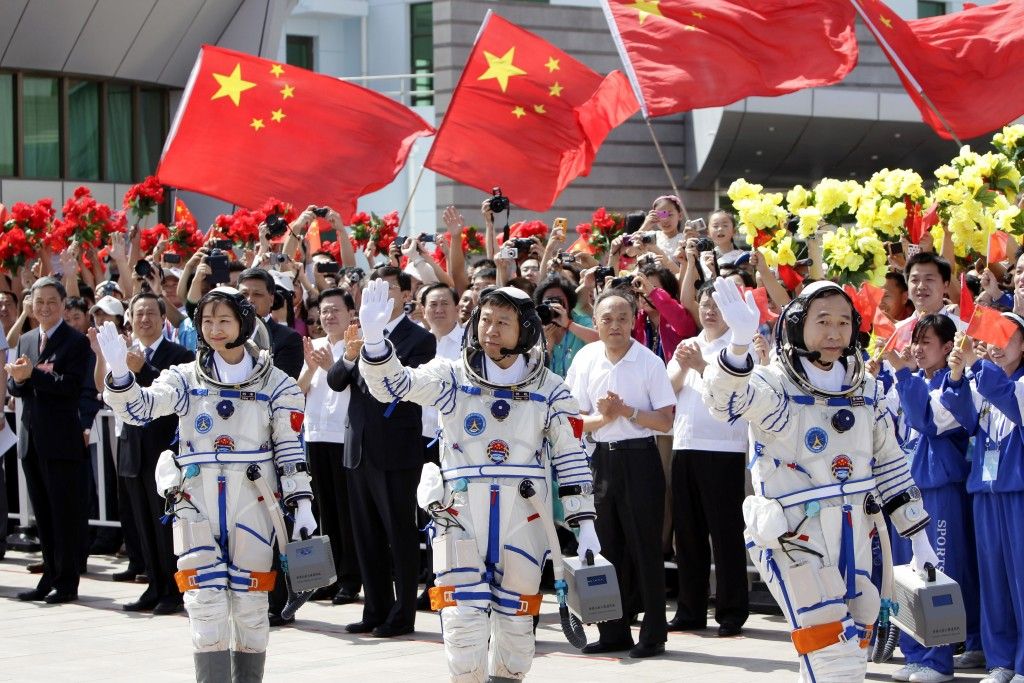
China vs the US and the Risks of a Space Rivalry
Article by Sarah Zheng November 29, 2020 (scmp.com)
• The recent voyage of China’s Chang’e 5 lunar spacecraft to bring Moon samples back to Earth was more than a signal of China’s ambitions to US military officials. To Space Force General John Raymond it represented a threat that China and Russia pose to American access to space. “The two countries seek to stop US access to space, Raymond posted on the DoD website. “[T]hey are developing capabilities that would negate the US advantage.” Raymond is calling for the US to work more closely with its allies, to “stay ahead of the growing threat.”
• Raymond’s approach would continue to deny China access to American technology and ensure a clear separation between the US and Chinese space programs. But Matthew Daniels, a senior fellow at Georgetown University, notes that the division between the US and Chinese space programs is due to US barriers, resulting in almost no direct links between the two countries in space technology research, development and operations. The US is ahead in technologies such as reusable launch systems and satellite manufacturing, but China is narrowing the gap. So cutting the US off from Chinese advancements in technology could come at a cost for the United States and miss an opportunity to reduce the risk of political conflict. So should the US cooperate with China in some areas or continue to freeze it out?
• Further limits on the transfer of space technologies to China could be carried out with still more barriers to US commercial space technology transfers, extra limits on US civil space engagement and coordination, diplomatic pressure on third parties working with both the US and China, and visa restrictions on Chinese aerospace researchers. In the long term, however, it could encourage China to establish a stronger space technology ecosystem of its own. China would then have more of a chance to build alternative international coalitions, including by drawing in Europe and Russia.
• “The current separation will probably continue to slow China in the near term,” says Daniels. “[T]his effect will diminish, however, and it may help grow indigenous supply chains and markets in China.” The US could thereby lose its international leadership in space, while missing a chance to obtain strategic information about China’s space activities and reducing the opportunity to manage crises and conflict.”

When the Chang’e 5 lunar spacecraft lifted off from a launch pad in southern China this week it was not just a signal of China’s ambitions to bring moon samples back to Earth. Half a world away in the United States, the launch was a sign to US Space Force General John Raymond of the threat that China – together with Russia – poses in blocking American access to space.

“The two countries seek to stop US access to space, and they are developing capabilities that would negate the US advantage,” he said in an interview published on the US Department of Defence website.
Raymond called for the US to work more closely with allies, to “stay ahead of the growing threat” from China.
It is an approach that would continue to deny China access to American technology and ensure a clear separation between the US and Chinese space programmes.
But some observers say that this could come at a cost for the United States and miss an opportunity to reduce the risk of conflict.
The two space programmes are already “substantially separated”, according to Matthew Daniels, a senior expert for the Office of the US Secretary of Defence and a senior fellow at Georgetown University.
In a report published in October published by the Johns Hopkins University Applied Physics Laboratory, Daniels said the division was due mostly to US barriers, resulting in almost no direct links between the two countries in space technology research, development and operations.
FAIR USE NOTICE: This page contains copyrighted material the use of which has not been specifically authorized by the copyright owner. ExoNews.org distributes this material for the purpose of news reporting, educational research, comment and criticism, constituting Fair Use under 17 U.S.C § 107. Please contact the Editor at ExoNews with any copyright issue.
Chang’e-5 lunar spacecraft, China, General John Raymond, Matthew Daniels, Russia, space force